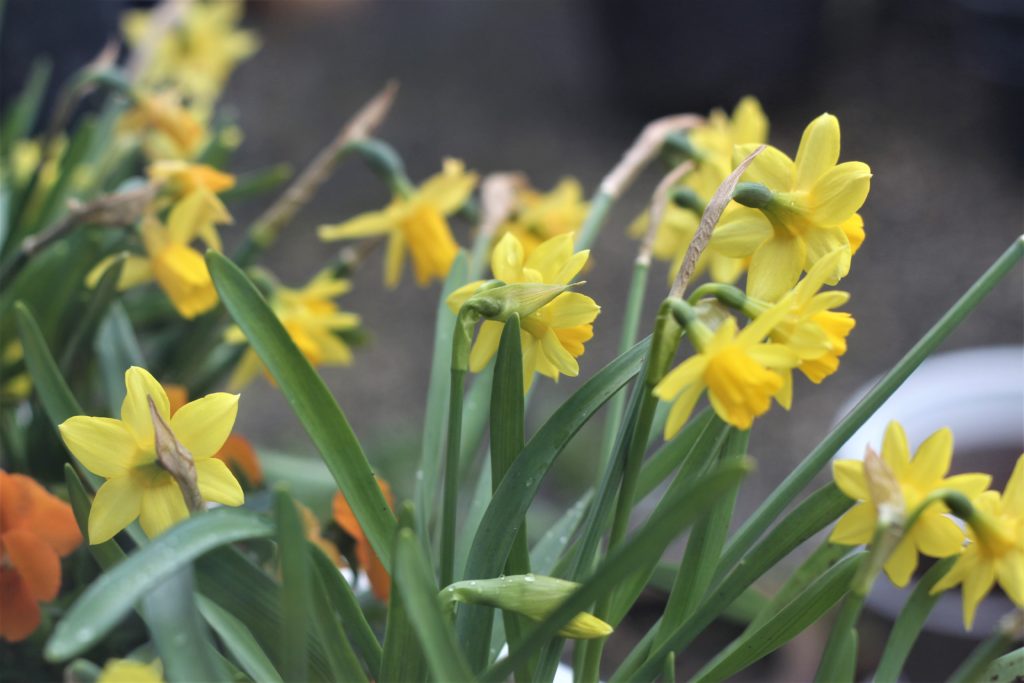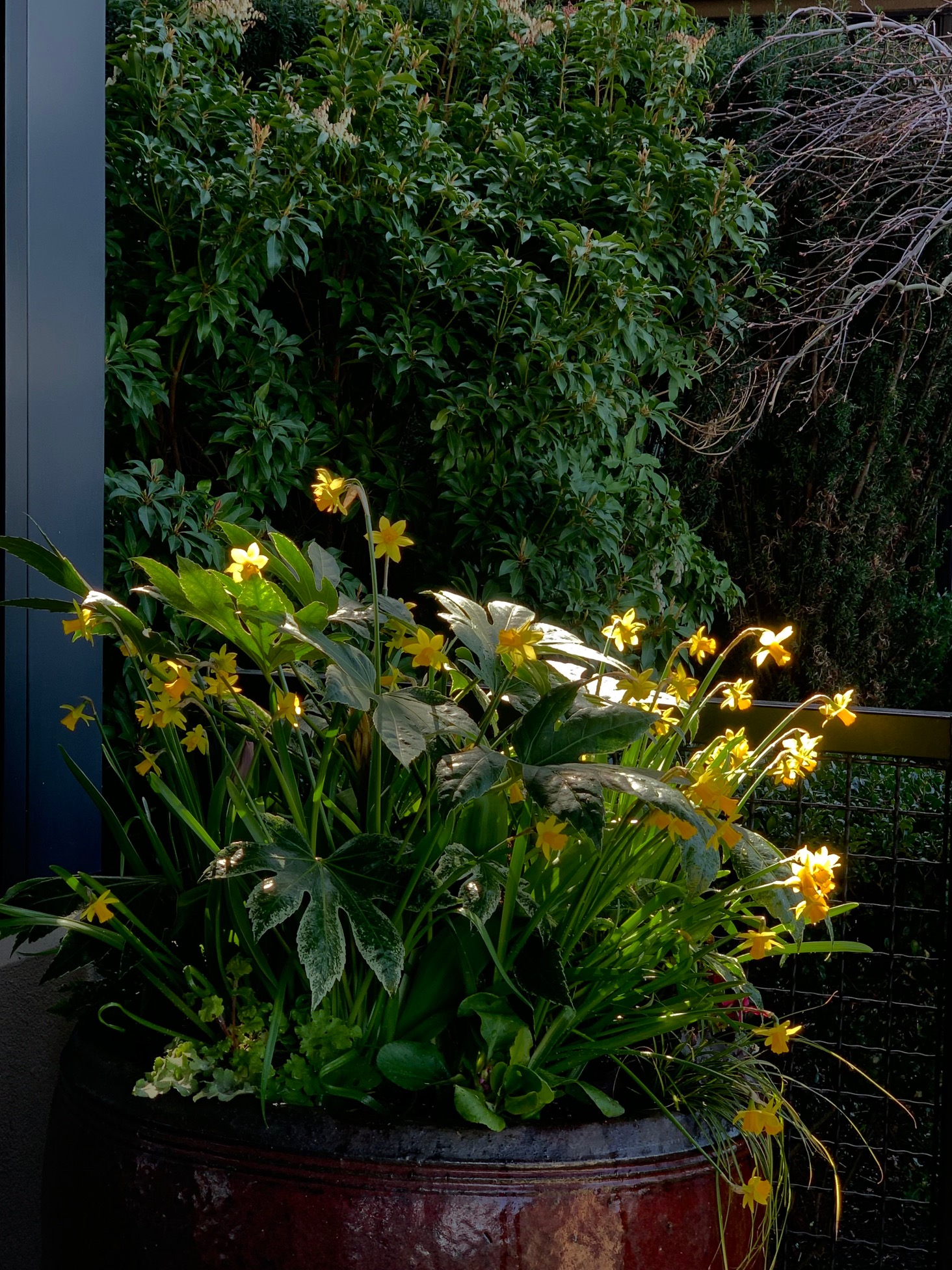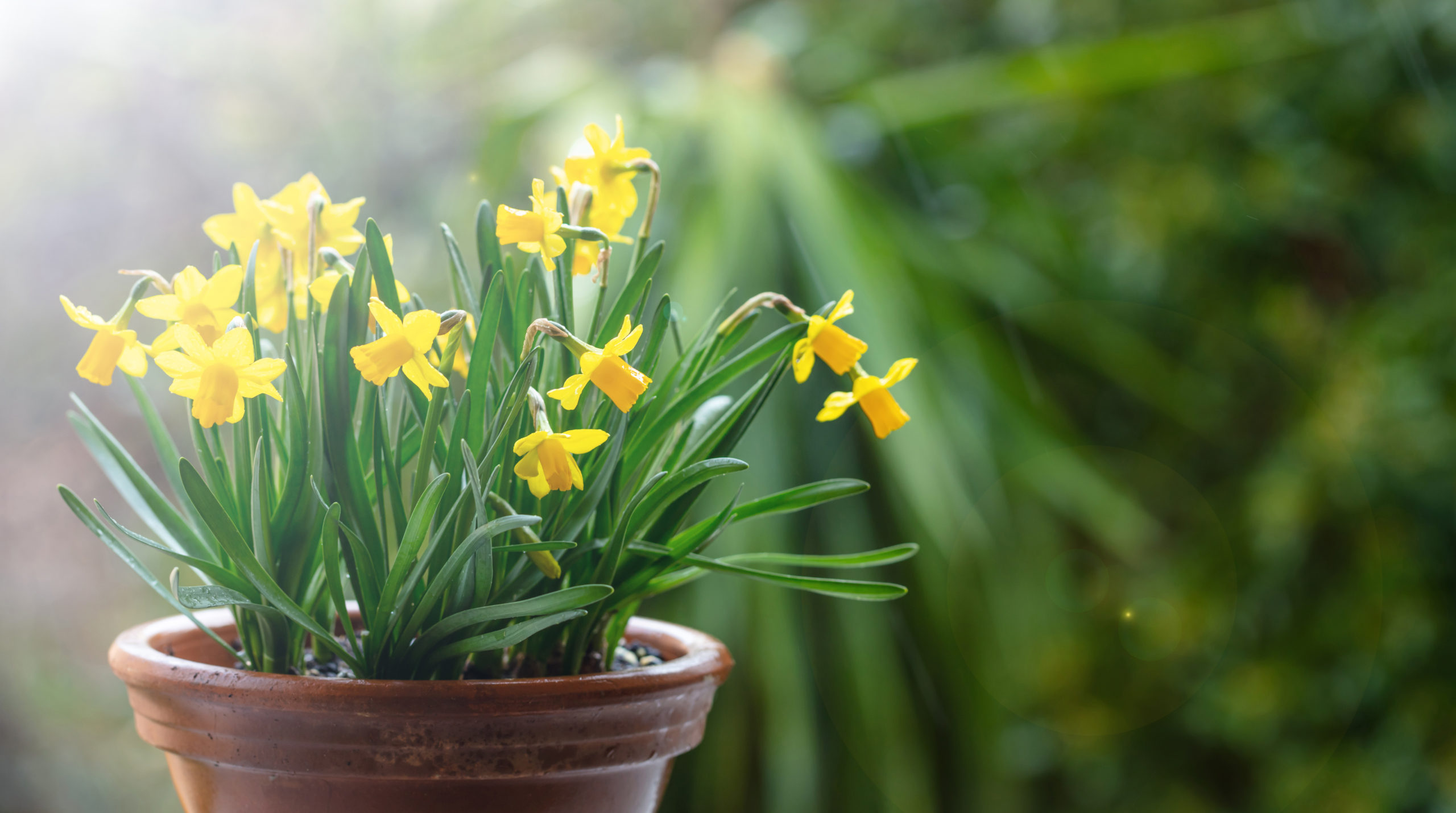
Narcissus ‘Tête `a Tête’ – The First Sign of Spring
CONTAINED
BRILLIANCE
Narcissus 'Tête `a Tête' nodding to a new season's arrival
Because of the Narcissus ‘Tête `a Tête’, there is literally no need for a calendar to signify spring. One of the first signs of the new season, it offers up sweet fragrance, bright color and cheer. ‘Tête `a Tête’ is a French term, meaning “face to face,” usually used to describe intimate conversation and it’s an apt name for these beauties. Their lemon-colored, bell- shaped blooms, with anywhere from one to five flowers per stem are clumped together, creating the image of flowers—if only they could speak—nodding and holding themselves in deep conversation.

I am always delighted to see them springing up (having planted them back in the fall) through our client’s plantings this time of year, giving promise of warmer, sunnier, and brighter days to come. Given their small size (standing just about 6” high), and propensity to produce little foliage they are great patio container plants to bring cheerful surprise this time of year.

Here are some tips for how to care for these sweet cheerful flowers
- Tête `a Têtes grow best in full sun although they can take part shade.
- Plant bulbs in a good potting soil in a pot with drainage.
- Remove spent flowers after blooming. If you don't, the plant begins putting all of its energy into producing seed and which takes away from feeding the bulb.
- When planted in the landscape, the recommendation is to resist cutting back foliage until June when the foliage yellows so that the plant continues to supply nutrients in the form of carbohydrates to the bulb in order to flower again next year. However, leaving the foliage in planters — typically located up front and center — can become unsightly and a bit boring to look at. I suggest trimming back the foliage to about 1-2” then lifting the bulbs in May when replanting your spring containers. To do this, loosen the soil around them with a trowel or cultivator (being careful not to slice the bulbs!), grasp the plant at the base of the leaves and gently tug the bulbs out of the pot.
- Relocate the bulbs to your landscape in a sunny well-draining location, adding in a fertilizer when planting or store them in a cool, dark, well-ventilated area over the summer to be planted in next fall. Due to taking them out of their natural rhythm of growth, the bulbs may or may not skip a year to flower, but once in the landscape they will naturalize and continue to bring you cheer and happiness for years to come.

More fun facts about Narcissus, March's flower, that are worth noting...
- Narcissi and Daffodils are the same flower. Daffodil is the common name for the Narcissus plant.
- Narcissi are some of the most cost-effective long term perennial plants available, due their ability to naturalize easily.
- Narcissi are often referred to as 'lent lilies' because they tend to bloom between Ash Wednesday and Easter.
- Narcissi flowers represent creativity, inspiration, awareness, compassion, and life. When given to a loved one, they are said to ensure happiness.

- Narcissi sap contains calcium oxalate which forms little bundles of crystals in the leaves and roots, making it relatively pest-free and not appetizing to munch on by animals like deer and rabbits.
- Narcissi grown commercially in Wales are currently playing a big role in the fight against Alzheimers by the extraction of galantamine (a compound known to slow the progression of the disease’s symptoms) from the flower for use in Alzheimer's medication.
- Narcissi sap is toxic to other flowers. To avoid damaging other flowers in your arrangements, remove the daffodils, cut the stems and stand them alone in cold water for 12 hours before adding to the rest of your flowers— or, keep them separate as their own arrangement.
- Yellow, the color of Narcissus ‘Tête `a Tête’, is the first color our human eyes see in the spectrum of color. This is why they attract our attention!
Looking for a pot to plant in which to plant those Tête `a Têtes? Containers come in many shapes, colors, sizes and materials. These tips for choosing your next garden container might help you find the right pot. A personal favorite of mine is a shallow (no less than 10” high) bowl-shaped container, containing solely daffodils to welcome in spring.
"If you look the right way, you can see that the whole world is a garden" Frances Hodson Burnett
Whatever says spring to you, I hope it brings a smile to your face as the Tête `a Têtes do for me, along with the comfort of the cycle of seasons; that it gets your creative wheels churning and brings giddy anticipation of opportunities to play and explore with plants both tried-and-true and new through the art of container gardening.

Resources:
Welsh-grown daffodils help tackle Alzehiemer's, Gov.UK Department of International Trade and Baroness Fairhead CBE, 04/15/2019
Narcissus: Ultimate Flower Guide, Interflora



